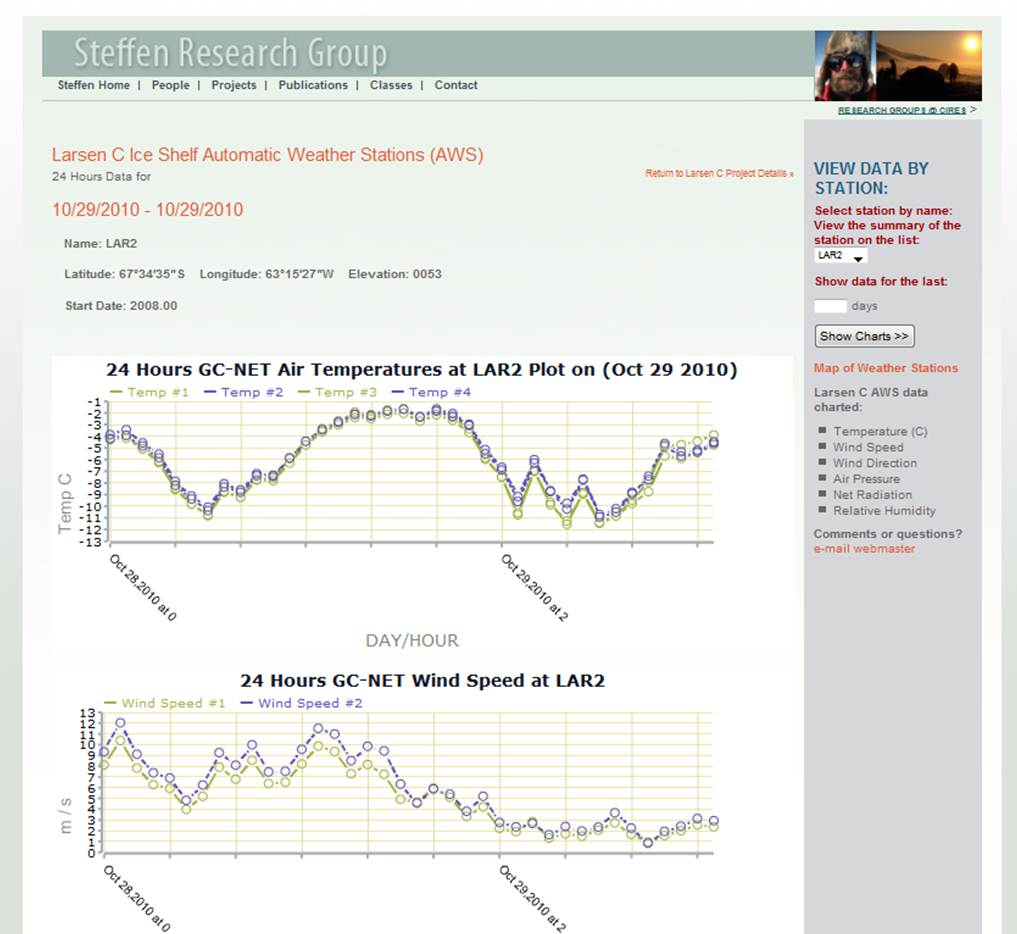Day two at CIRES involved an in depth meeting with Nikko in his office. There we discussed his most recent trip to Greenland.
 Nikko Bayou - CIRES - Boulder, CO
Nikko Bayou - CIRES - Boulder, CO
He explained how the mild winter allowed a significant amount of snow melt to occur, and that meant serious damage to Swiss Camp. In fact, when they arrived at Swiss Camp this past April, it was totally unusable.
 Swiss Camp - Collapsed on the Greenland Ice Sheet
Swiss Camp - Collapsed on the Greenland Ice Sheet
The platforms that supported the two large red tents had collapsed. The kitchen was unusable. They had to spend a majority of their time rebuilding the camp.
 New platform for Swiss Camp
New platform for Swiss Camp
8 people rebuilt Swiss Camp, many of them having limited carpentry and building skills. Luckily, they were able to get the camp up and running in a few days. They constructed new supports, to keep the camp from collapsing.
 Swiss Camp - Rebuilt
Swiss Camp - Rebuilt
One week at Summit -worked on 50 m tower. Replaced BSRN SOLAR TRACKER.
 50 Meter Swiss Tower
50 Meter Swiss Tower
 BSRN - with new solar tracker - Summit Station, Greenland
BSRN - with new solar tracker - Summit Station, Greenland
Now, back to the data Nikko - takes raw data and processes. CIRES Provides the data to the scientific community, free of charge. The data can be accessed by going to the CIRES Steffen group website and requesting the date and location desired. During the transition from Field season to field season, Nikko processes the raw data. He must basically hand check the data since the Data logger does not reset time. What happens is there is an overlap of data and unless Nikko filters the data, it would be unusable. So, after loading the data set, Nikko hand checks the raw data also known as Shape RAW. Nikko Creates an A-level data set, the final processed data is at the C-Level.
 Quality Check software
Quality Check software
The Quality check tool finalizes processed data. Nikko wrote the program that performs the quality check. Here it is step by step: • Step 1: Generates a standard file from the downloaded dataset (script) • Step 2: ShapeRAW. Organizes the different channels • Step 3: QCheck. Calibration, cleaning software. Generate the C-Level file. • Step 4: Spliter. Extract a specific time period with desired parameters & format.
In our discussion, Nikko stressed how important Field work is to understand how data is processed and used. He said that People must be aware of how data is processed, not just from the GCN, but any scientific data.
Nikko informed me that it takes him approximately thirty minutes to process data from each AWS.
It can take up to a day to process raw data depending on certain variables.
Technical issues can be a challenge, especially since Nikko wrote the program that processes the data. Surprisingly, Nikko relies on Google search to help him when he runs into computer issues.
 Final AWS Data Output - Web Display
Final AWS Data Output - Web Display
So that is how the AWS data is processed. In my PolarTrec journeys, I was able to see how scientific data is collected in the field, how AWS instruments are maintained and repaired, and finally, how the data is processed.
I hope to continue my exploration of Greenland and the GCN. Koni is now working in Switzerland, so I guess I'll have to work on visiting him there first.
Until next time, this is Jim Pottinger signing off!

